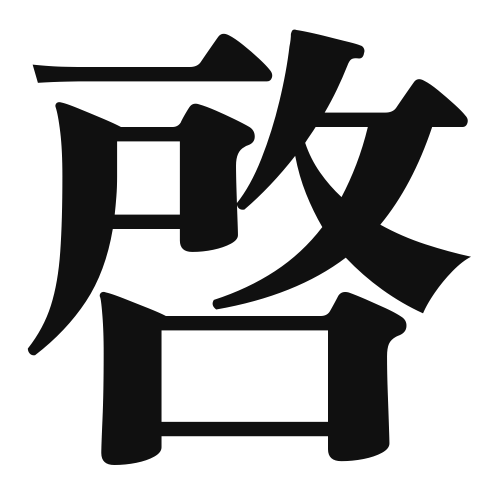1. Overview of Meaning
The kanji “啓” (ke) generally means “to open” or “to enlighten.” It is often associated with the idea of revealing knowledge or providing guidance.
2. Formation and Radical
Formation of the Kanji: The kanji “啓” is a phonetic compound (形声文字), which combines the sound component “音” (on) and the meaning component “口” (kuchi), which means “mouth.” This suggests a connection between speaking or expressing and the act of opening up or enlightening.
Radical: The radical for “啓” is “口” (kuchi), which relates to speech and communication.
3. Examples of Usage
Common Words and Phrases: Some frequently used words that include “啓” are “啓発” (keihatsu – enlightenment) and “啓示” (keiji – revelation).
Example Sentence in Daily Conversation: “この本は私に多くのことを啓発してくれました。” (This book has enlightened me on many things.)
4. Synonyms and Antonyms
Similar Kanji: A kanji with a similar meaning is “開” (kai), which also means “to open,” but it is more focused on the physical act of opening something, like a door.
Antonyms: An antonym for “啓” is “閉” (hei), which means “to close,” indicating the opposite action of shutting or concealing.
5. Cultural and Historical Background
Relation to Japanese Culture: The concept of “啓” is significant in Japanese culture, particularly in education and personal development, where enlightenment and knowledge are highly valued.
Proverbs and Idioms: An example of a related idiom is “啓発的な経験” (keihatsuteki na keiken), meaning “enlightening experience,” which emphasizes the importance of experiences that lead to personal growth and understanding.
